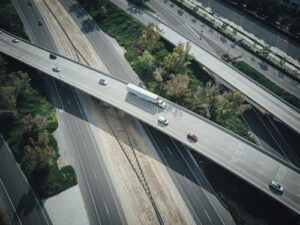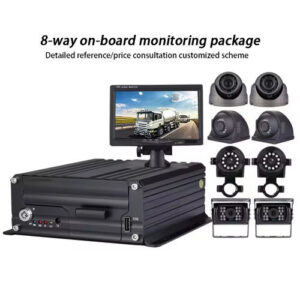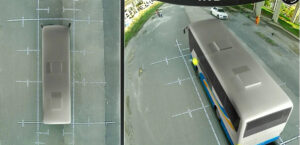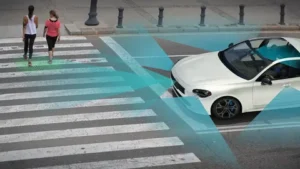Crash recorder cameras, also known as accident cameras or event data recorders (EDRs), have become a vital tool in enhancing automotive safety. Designed to capture real-time data and footage during a collision, these cameras provide critical insights for accident investigations, insurance claims, and driver safety improvements. This article delves into the features, benefits, applications, and advancements of crash recorder cameras, demonstrating their pivotal role in modern transportation.
What is a Crash Recorder Camera?
A crash recorder camera is a device installed in vehicles to monitor and record events leading up to, during, and after a crash. These cameras capture video footage, sensor data, and driving behavior, providing a comprehensive record of incidents. According to NHTSA, crash recorder cameras are invaluable for improving road safety and understanding collision dynamics.
Key Features of Crash Recorder Cameras
Modern crash recorder cameras are equipped with advanced features to ensure accurate and reliable data collection:
- High-Definition Video: Captures clear footage of the road and interior, ensuring detailed records of incidents.
- Event-Based Recording: Automatically records footage during sudden braking, collisions, or other triggers.
- G-Sensor Integration: Detects sudden changes in acceleration or impact forces, activating the camera during critical events.
- Loop Recording: Continuously records video, overwriting older footage to maximize storage capacity.
- GPS Tracking: Monitors vehicle location, speed, and route history.
- Two-Way Audio: Includes microphones and speakers for capturing sounds and facilitating communication.
- Cloud Connectivity: Stores footage securely in the cloud for remote access and analysis.
- Night Vision: Infrared capabilities ensure clear recording in low-light conditions.
- Wide-Angle Lens: Provides a broader field of view to capture more details around the vehicle.
How Crash Recorder Cameras Work
Crash recorder cameras operate as part of a vehicle’s safety ecosystem, combining hardware and software for effective monitoring:
- Data Capture: The camera records video, audio, and sensor data continuously or when triggered by specific events.
- Sensor Integration: G-sensors detect impact forces or abrupt movements, activating event recording.
- Data Storage: Footage is stored locally on SD cards or uploaded to the cloud for secure access.
- Real-Time Monitoring: Fleet operators or drivers can access live feeds through mobile apps or web dashboards.
- Incident Analysis: Video and data are analyzed to determine the cause and dynamics of collisions.
Benefits of Crash Recorder Cameras
1. Enhanced Accident Investigations
Crash recorder cameras provide indisputable evidence for determining fault, aiding law enforcement, and resolving insurance claims.
2. Improved Driver Accountability
Monitoring driving behavior encourages safer habits, reducing the likelihood of accidents caused by negligence or recklessness.
3. Real-Time Alerts
Fleet managers can receive instant notifications of collisions, enabling prompt responses and support for drivers.
4. Reduced Insurance Costs
Many insurers offer discounts for vehicles equipped with crash recorder cameras, recognizing their role in preventing fraud and improving safety.
5. Comprehensive Data Collection
Cameras capture a wealth of information, including video, speed, braking patterns, and impact forces, providing a complete picture of events.
6. Increased Safety
The presence of cameras deters risky behaviors and promotes adherence to traffic laws, enhancing overall road safety.
Applications of Crash Recorder Cameras
Crash recorder cameras are used across various sectors to improve safety, accountability, and operational efficiency:
1. Personal Vehicles
Individual drivers use crash recorder cameras to document incidents, protect against insurance fraud, and improve driving habits.
2. Commercial Fleets
Fleet operators rely on cameras to monitor driver behavior, ensure compliance with regulations, and manage accident investigations.
3. Public Transport
Buses, taxis, and other public transport vehicles use cameras to enhance passenger safety and document incidents.
4. Emergency Services
Ambulances, fire trucks, and police vehicles utilize crash recorder cameras for evidence collection and operational review.
5. Construction and Heavy Equipment
Cameras help monitor equipment operators, reduce accidents, and ensure compliance with safety standards on construction sites.
Future Trends in Crash Recorder Cameras
The development of crash recorder cameras is driven by advancements in technology and the growing demand for intelligent safety systems:
1. AI-Powered Analytics
Future cameras will feature AI algorithms capable of analyzing footage to predict and prevent potential accidents.
2. Integration with Autonomous Vehicles
Crash recorder cameras will play a critical role in autonomous driving systems, providing real-time data for decision-making.
3. Enhanced Video Quality
Cameras will offer ultra-high-definition (4K and beyond) video resolution for clearer and more detailed footage.
4. Cloud-Based Solutions
Cloud connectivity will enable seamless storage, analysis, and sharing of video and data, enhancing accessibility and security.
5. Energy-Efficient Designs
Solar-powered and energy-efficient cameras will support sustainable and cost-effective operation.
6. Broader Adoption
Advances in affordability and ease of use will lead to widespread adoption across personal, commercial, and public sectors.
Challenges and Solutions
Despite their benefits, crash recorder cameras face several challenges:
1. Privacy Concerns
Ensuring compliance with data protection laws and implementing encryption measures are essential for addressing privacy issues.
2. High Initial Costs
The upfront expense of advanced cameras can be mitigated by their long-term benefits, including reduced insurance premiums and improved safety.
3. Maintenance Requirements
Regular cleaning and upkeep are necessary to ensure optimal camera performance, especially in harsh environments.
Conclusion
Crash recorder cameras are revolutionizing vehicle safety by providing critical insights for accident investigations, enhancing driver accountability, and improving road safety. As technology advances, these devices will become even more sophisticated, offering AI-powered analytics, seamless cloud integration, and enhanced video quality. Explore the latest crash recorder cameras to unlock the full potential of intelligent safety solutions for your vehicle or fleet.






